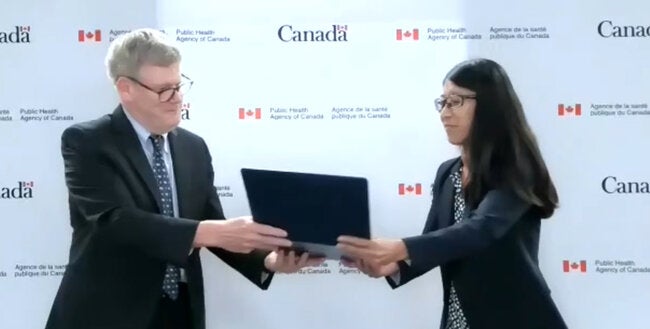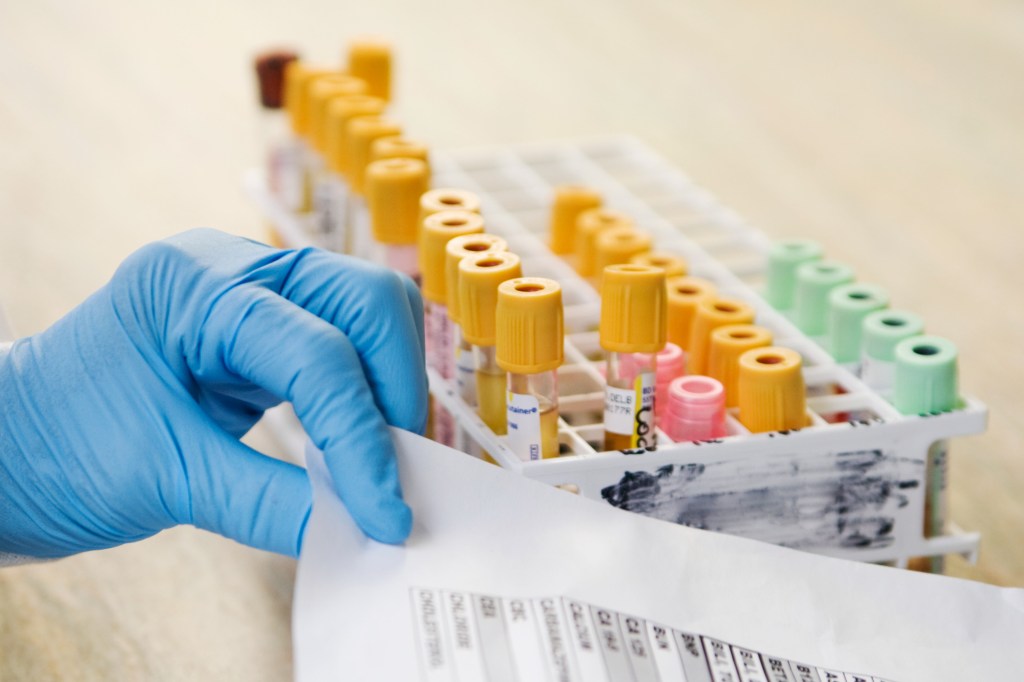Recent statistics show more than 20% of healthcare costs resulting from emergency department utilization, hospitalizations and hospital readmissions can be attributed to just 1% of patients.
THE PROBLEM
In 2017, University of Virginia Health’s 30-day readmission rate for patients with complex and costly medical conditions was as high as 17% to 18% per year. This put the health system in the 50th percentile of similar academic medical centers nationally and near the bottom among academic medical centers in the state.
This was problematic for two reasons. From a strictly business perspective, readmissions penalties cut into revenue. Second, from an operational perspective, readmitted patients may divert beds and resources that could be used to care for patients with more intensive healthcare needs.
“In addition, industry research as well as our own experience indicates as many as 20% of readmissions may be preventable,” said Teresa Radford, RN, clinical program coordinator at UVA Health. “We believed UVA Health had an opportunity to improve the quality of care we provided as well as health outcomes and reimbursement by strengthening care for ‘super utilizers’ – typically, patients with complex health and social needs.”
PROPOSAL
UVA Health convened a multidisciplinary team to explore best practices for improving health and wellbeing for people with complex health and social needs.
Often, these patients are dealing with multiple conditions, ranging from physical to behavioral health diagnoses. They also face social determinants of health such as unstable housing or homelessness, food insecurity, and lack of transportation.
“Our team believed individualized care plans, or ICPs, held strong potential to improve the health of ‘super utilizers’ of care while reducing readmission rates,” said Dr. Amber Inofuentes, medical director for the Medicine HOME program at UVA Health. “They also could help decrease the strain on health system resources that occurs when patients don’t receive the right interventions at the right time.
“ICPs are drafted by a team of nurses, social workers, pharmacists, clinical care coordinators and physicians involved in each patient’s care,” she continued. “They provide clinicians with a summary of enrolled patients’ medical and social history and a look at prior utilization patterns to better understand the challenges they face.”
From there, ICPs give care teams insight on how to most effectively manage the patient’s care, and about the types of interventions and resources that could help support better outcomes, she added. Because care plans are integrated into the EHR, this approach supports consistent care and communication across care settings, including in the emergency department.
MARKETPLACE
There are many vendors of telemedicine technology and services on the health IT market today.Healthcare IT Newspublished a special report highlighting many of these vendors with detailed descriptions of their products.Click hereto read the special report.
MEETING THE CHALLENGE
UVA Health’s Medicine HOME Program launched in 2017 with a cohort of 10 adult patients with sickle cell disease. At that time, these patients accounted for 7% of all 30-day readmissions for general medicine services at UVA Health and nearly $1 million in annual costs.
“A multidisciplinary team of physicians, nurses and mental health professionals created an ICP for every individual,” Radford explained. “Our criteria for patient enrollment included at least one chronic disease or behavioral condition that contributes to frequent hospital visits and high utilization of the hospital-based services.
“We define ‘super utilization’ as four or more 30-day readmissions in the past 12 months,” she continued. “The results were dramatic: 30-day readmission rates for 10 patients with sickle cell disease fell by more than 65%, and hospital bed days dropped by 40%.”
The pilot was so successful that UVA Health expanded the program in 2018 to patients with other complex medical conditions including diabetes, substance use disorder, end-stage renal disease and many others.
“The challenge, however, is that many patients with these conditions experience significant social challenges such as unstable living conditions, food insecurity and lack of transportation,” Inofuentes explained. “They also are often the most frequent users of the ED – often at multiple locations across the state.
“To help ensure consistent high-quality treatment no matter where they seek care, we needed a way to extend access to each patient’s ICP to ED providers outside UVA Health,” she continued. “We began partnering with the CommonWealth’s Emergency Department Care Coordination (EDCC) program using technology provided by PointClickCare to alert our Medicine HOME Program care coordination team whenever an enrolled patient seeks care at any ED in Virginia.”
PointClickCare’s technology integrates with UVA Health’s EHR and leverages ADT feeds and an expansive care collaboration network to push notifications to clinicians at the point of care.
“When a Medicine HOME patient arrives in an ED, for example, real-time alerts built into the network notify the case manager at the start of the visit,” Inofuentes noted. “The care coordination team is then able to supply the treating physician with the patient’s ICP to ensure optimal care and treatment.
“We’re always trying to break down barriers to care and care silos – especially when treating our most vulnerable patients,” she continued. “Our work with PointClickCare and the EDCC supports a highly informed and highly coordinated approach that improves care and reduces cost for patients with complex conditions.”
For example, in one recent case, the UVA Health team received an alert that a Medicine HOME patient diagnosed with end-stage renal disease and experiencing homelessness had arrived in another health system’s ED.
“We were able to reach out to that ED to notify them of this patient’s housing status and request for transition to a skilled nursing facility,” Inofuentes said. “We also were able to direct them to the patient’s individual care plan, leading to a better outcome for the patient.”
RESULTS
The impact of the Medicine HOME Program on the care of patients with medical and behavioral health challenges is undeniable, Radford reported.
“A 12-month pre-post analysis of 37 patients who took part in the program found that overall, inpatient and/or observational admissions dropped by 30%; readmissions decreased by 46%, and total costs of care fell by 20%,” she said.
“Beyond just decreased hospital-based utilization, the Medicine HOME program has focused on improving quality of care for complex patients rather than reducing quantity of care,” she continued. “For each of our complex illness subgroups – diabetes, substance use disorder and sickle cell disease – we have developed quality metrics so we can focus our programmatic efforts on patient-centered outcomes.”
For the diabetes cohort, data analysis demonstrates meaningful reductions in adverse events including diabetic ketoacidosis episodes, and hospitalizations requiring intensive care units and more modest reductions in severe hypoglycemic events.
“Our program also has intentionally sought to reduce the incidence of discharges ‘against medical advice’ (AMA), a low-value practice with proven harms to vulnerable populations like ours,” Radford explained. “A recent analysis of all enrollees showed a statistically significant reduction in AMA discharges among enrolled patients with one or more AMA discharge prior to enrollment – odds ratio 0.28.”
ADVICE FOR OTHERS
“Strive to implement a model of care that is person-centered and tears down institutional, cross-institutional and cross-sector silos and barriers to care,” Inofuentes advised. “Emphasis should be on meeting the patient wherever they are along the continuum of care – for example, emergency room, tertiary acute care, ambulatory, community and/or home settings.
“A concise, comprehensive ICP, carefully drafted by each patient’s healthcare team, is essential to the success of any complex care program modeled after the UVA Medicine HOME Program,” she continued. “Beyond that, there’s an old saying: ‘You can’t measure what you can’t track.'”
Clearly defining distinct patient cohorts, identifying your most important metrics and tracking specific, patient-centered outcomes are vital to assessing the effectiveness of a program, she said.
“To this end, we recommend linking your data sets to capture program results and effectiveness,” she said. “It’s also important to allow for sufficient time to evaluate the effectiveness of your program. Complex care patients with high utilization often have extensive social determinants of health that cannot be adequately addressed in a matter of weeks or even months. Programmatic impact should be assessed over years.
“Finally, regardless of how good your ICP may be, its usefulness is only as good as its accessibility to your patient’s healthcare team – including those outside your own healthcare system,” she added. “Leveraging software-based solutions, such as an ADT-based care collaboration network that is integrated with the EHR, can help ensure that the right care professionals are contacted whenever a patient seeks care outside your health system.”
Doing so facilitates a highly integrated approach to care delivery that improves health and helps ensure the right patients receive the right care at the right time, she said.
Note: This article have been indexed to our site. We do not claim legitimacy, ownership or copyright of any of the content above. To see the article at original source Click Here








